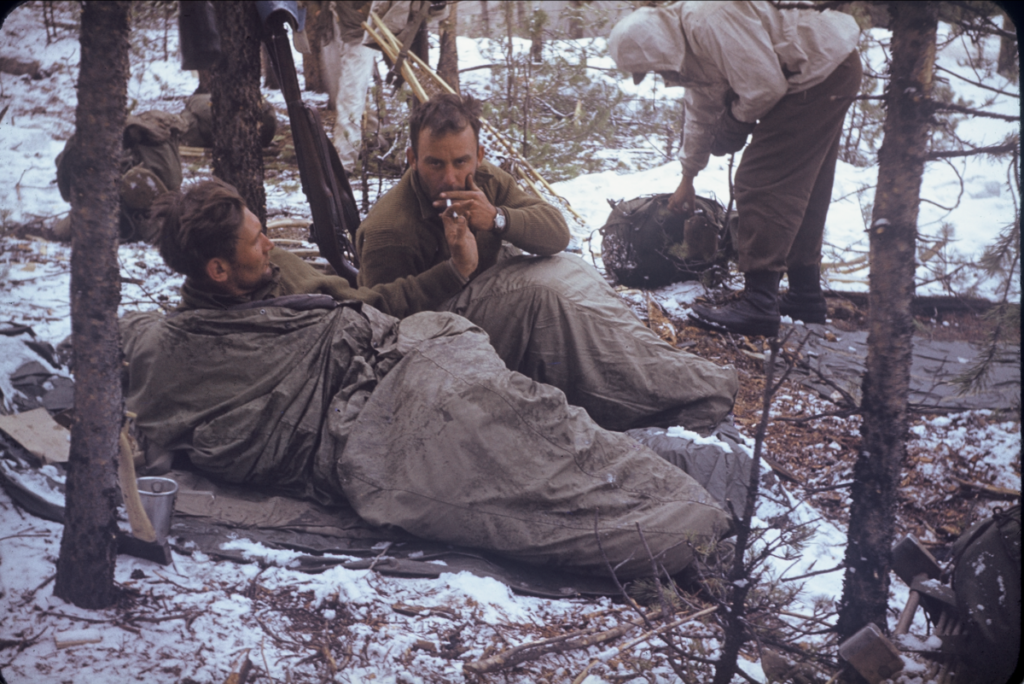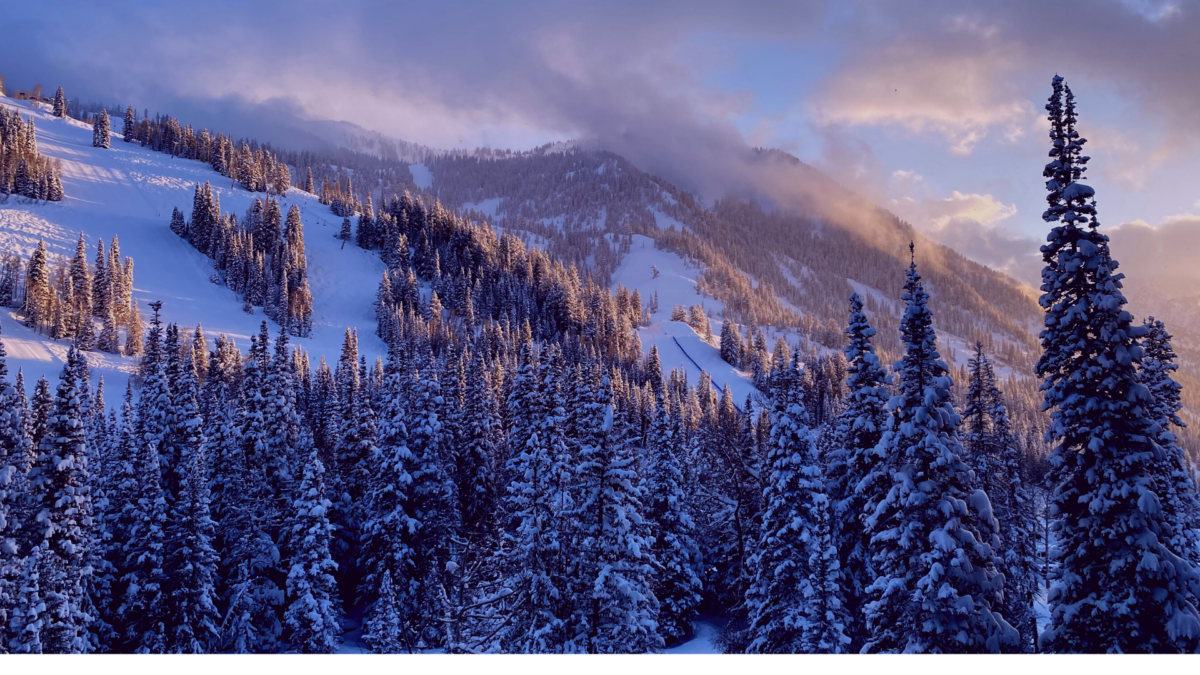
Source: Colorado Snowsports Museum
The World Wars were times of great tension around the world. Many men enlisted in the United States Army, and many new regiments were created to fulfill the international demand for soldiers. One of the new regiments created was the 86th Infantry Regiment. In World War I, it was just one of many other regiments created too late to make a genuine impact during the war. However, it played a pivotal role in World War II as a part of the 10th Mountain Division, which was a specialized unit for mountain warfare that fought in Italy near the end of World War II. There has been a multitude of research already done about the 10th Mountain Division. However, throughout the numerous blogs, books, and memoirs, the 86th Infantry Regiment’s progression from World War I to World War II has not been discussed at length, and nor have the contributions of the singular regiment itself. This essay will examine the transformation that the regiment underwent from World War I to World War II, and how it was altered from a regular army regiment to one specialized for ski warfare.
According to Infantry Regiments of the US Army, the 86th Infantry Regiment was founded as part of the 18th Division of the US Army on 31 July 1918, near the end of World War I. The 18th Division as a whole was formed using existing units of the Army. The 86th Infantry itself was originally formed from the 35th Infantry of the United States Army. On 31 August of that same year, the newly formed units were assembled at Camp Travis in Texas. According to E. B. Johns, the regiment was initially commanded by Lieutenant Colonel John V. Spring Jr. Then, on 7 September 1918 Colonel Robert H. Sillman was assigned to command. He was assigned to the regiment just two months before Armistice. The tide of the war was turned during the Hundred Days Offensive, which began 8 August 1918, just over a week after the regiment was founded. The Armistice was reached on 11 November 1918, and it officially ended the fighting between the Allied Powers and Germany.
In registers of those who fought in World War I, such as the Biographical Register of the Officers and Graduates of the U.S. Military Academy at West Point, it becomes clear that some of the men who were assigned to this regiment had served in other regiments previously, which was a common practice during World War I. An example of one such man is John Keliher. Throughout the war, he had been transferred to many regiments and eventually became a major in the 86th Infantry Regiment. He served in this role from 29 August 1918 to 27 February 1919. He was first transferred to New York, and then to multiple camps in Texas, including Camp Wilson, Fort McIntosh, and Camp Travis. The final regiment that he served in was the 86th Regiment. Another man who served in this regiment was Corporal Samuel H. Benton. He enlisted in June 1918 and was trained at Camp Travis. He was discharged in February 1919 when the regiment was disbanded. Like so many other members of the 86th Infantry Regiment, he remained stateside, and never fought in Europe.
According to a dissertation written by James Seidule at The Ohio State University, by the time of World War I’s ending, the 86th Infantry Regiment, along with multiple other Army regiments, had only a few men remaining: one first sergeant per company, along with one adjutant and sergeant-major remaining in each regiment. According to the author of this dissertation, some of the members of the 86th were transferred to other regiments as replacements for men who had fallen in battle. Therefore, it appears that the reason the regiment itself never went overseas was that its men were used as replacements. They were never sent to fight their own battle: Instead, the men continued the battles of others who could no longer fight.
Given these facts, it appears that the regiment was formed too late to have a real impact on the war effort during World War I, although some of its individual members fought in other regiments that made a stronger impact. Since the end of the war was imminent after the Hundred Days Offensive began, there was no real reason for the 86th Infantry Regiment to go overseas as a whole without proper training. They were disbanded on 13 February 1919, and the regiment did not become pertinent again until World War II.
World War II began on 1 September 1939, and America entered the war after the bombing of Pearl Harbor in December 1941. According to Samuel Southworth’s A Guide to America’s Special Operations Units, on July 15 1943 the 10th Light Division was activated. This division was also known as the 10th Mountain Division. This regiment was created to assist with the mountain invasion of Italy. Soldiers from other regiments were assigned to the 85th, 86th, or 87th Mountain Infantry Regiment. These three regiments made up the division. Many of the men that were assigned to these units had never been on skis.

Source: wikipedia.org
According to World War II veteran Dale Alwine’s Oral History video, he was taken on a train after enlisting without being told where he was going. He spent his initial summer in Fort Riley, Kansas. Then, in autumn, the Army placed him on another train, which took him to Camp Hale. Camp Hale was placed very high up on an isolated mountain in Colorado. This camp was built to house a single division. Once there, he was assigned to the 86th Regiment. In his Oral History, he claimed that he had never heard of the 10th Mountain Division when assigned to serve in the 86th Regiment. He and the other members of his regiment underwent specialized training by ski instructors, despite many of them not knowing how to ski. They were trained at the camp, which had a high altitude of 9,200 feet. Of the members who were assigned to this division, some of them were too weak to proceed. Since they were trained and had to serve at such high altitudes, some men found it too difficult to breathe and carry their packs. Thus, they were transferred to other regiments where the training and the work was less strenuous and specialized. This demonstrates the shift in the regiment’s goals from World War I to World War II, because the regiment required training that was much more particular, and thus only men with certain skills were able to undergo the rigorous training.
In November 1944, the troops were finally deemed ready and were sent to Italy. The target objective was a row of mountains in northern Italy, which included Mount Gorgolesco, Mount Belvedere, and Mount Della Torraccia. According to Tom Jenkins, the main goal of the 10th Mountain Division as a whole was to take back Riva Ridge from the Germans, and the 86th Infantry Regiment was the regiment that actually led this charge. The division spent the weeks before the assault making an important plan. Firstly, they used searchlights for weeks on end. This ensured that the Germans got used to the lights shining at night, so when the regiments attacked, they were able to use the lights without the Germans realizing anything untoward was occurring. Secondly, the divisions also ran night patrols up the cliffside. The cliffside was very dangerous and had waterfalls, rocks and mud, and deep crevices. This was quite risky for the men, but due to their specialized training, they were best equipped to take the Italian mountains and perform these tasks.
According to the article “The Assault on Riva Ridge,” after weeks of preparation, on 18 February 1945 the attack began under the cover of night. The 86th Infantry Regiment is the regiment that conquered Riva Ridge, which is what made them so vital in the effort of taking back Italy from the Axis Powers. Four companies of the First Battalion of the Regiment began the trek up to the ridge itself. When asked if they wanted to carry blankets or extra ammunition, all the men chose extra ammunition, demonstrating that victory took precedence over everything else. Some of them carried up to seventy-five pounds of extra supplies and ammunition along with their gear while climbing up the mountain. The climb was very treacherous for the men of the Regiment. One of the trails went through a waterfall. The men had to step one foot at a time and were struggling not to slip and make noises that would alert the Germans to their presence. Some of the men had limited climbing training, but fortunately, no one fell on this treacherous climb to take the Ridge. Throughout the ascent, the 86th Regiment came upon small groups of Germans, and they killed or captured each group without much struggle, as the Germans did not expect them. The climb was incredibly treacherous, but the fact that each member of the Regiment successfully accomplished it demonstrated their dedication to the American cause.
The men of the 86th Infantry Regiment served multiple purposes in the battle for Riva Ridge and the subsequent battles for other mountains. The job of the First Battalion of the Regiment was to dislodge Germans from the top of the Ridge. For some men, this was the first time they ever fired their gun after they arrived in Italy. According to Dale Alwine, two days after the first battalion went up, engineers were finally able to rig a tram to get the injured down and more weapons up, which helped the men of the 86th Regiment continue to stand their ground. Some of the 86th Regiment fought on Mount Serrasiccia, but snipers kept rescuers from coming to that mountain, and therefore many men of the regiment died of their wounds.
According to Tom Jenkins, at one point during the fights, Lieutenant Colonel Henry Hampton, the commander of the 86th Infantry Regiment sent one platoon of the regiment to fight at Pizzo di Campaino. Unfortunately, there were two German companies there, which posed a great risk. The battle was long and arduous, and both bullets and grenades were used. The men of the platoon repelled seven counterattacks in 36 hours, but in the end, the battle was a success for the Americans.
Regarding the other mountains, Mount Gorgolesco and Mount Belvedere were ascended by different battalions. On Mount Gorgolesco, the summit was neared by 3:00 AM on February 20 1945. When the summit was reached, there were minefields and tripwires everywhere, but it was successfully taken, albeit with some rather large casualties. While another regiment initially battled for Mount Della Torraccia, the Third Battalion of the 86th Regiment took over and successfully seized the mountain after a string of fierce counterattacks from the Germans.
All in all, the 10th Mountain Division experienced 923 casualties: 192 killed, 730 wounded, and one prisoner of war, according to Maurice Isserman’s “Mountain Men.” Even after the battles on the different mountains, the 86th Infantry Regiment and the other regiments of the 10th Mountain Division continued to assist the Allies in their attempts to go North until the eventual surrender of Italy. As they continued to make their way up North, the troops crossed the Po Valley. Some of the German soldiers they met along the way began to surrender. The infantry then proceeded to the mountains surrounding Lake Garda. The Germans attempted to defend these mountains with great effort, and these mountains were especially dangerous with no easy way to get through. According to the documentary The Last Ridge, while the 86th Regiment was walking in a tunnel in the mountains, the Germans managed to hit them with an 88 shell, and a number of the men were killed or wounded in the tunnel. The men of the 86th Infantry Regiment continued to fight until World War II ended on September 2, 1945. The 86th Infantry Regiment was inactivated on 27 November 1945.
Even though the 86th Infantry Regiment did not have a great influence on World War I, they had a very great influence on the outcome of World War II. Their ability to take Riva Ridge proved a turning point in the war against Italy, and they continued to push on until surrender. The specialized mountain training that the men of the 86th Regiment underwent and the fact that they were successful truly shows the importance of ski warfare during World War II.

Source: Colorado Snowsports Museum
Bibliography:
Benson, Jack A. “Skiing at Camp Hale: Mountain Troops during World War II.” The Western Historical Quarterly, vol. 15, no. 2, 1984, pp. 163–174. JSTOR, www.jstor.org/stable/968515. Accessed 14 Feb. 2021.
Camp Travis: The National Army Cantonment At Fort Sam Houston : 75th Anniversary, 1917-1992. The Fort Sam Houston Museum, 1992.
Cullum, George. Biographical Register Of The Officers And Graduates Of The U. S. Military Academy At West Point, N. Y.: From Its Establishment, In 1802, To 1890; With The Early History Of The United States Military Academy. Boston. Houghton, Mifflin, 1920.
History Of Texas World War Heroes. Dallas: Army & Navy History Company, 1919.
Isserman, Maurice. “MOUNTAIN MEN.. (Cover Story).” World War II 34, no. 5 (February 2020): 32–41. http://search.ebscohost.com.proxy.library.emory.edu/login.aspx?direct=true&db=khh&AN=139615681&site=ehost-live&scope=site.
Jenkins, Tom. “The Assault on Riva Ridge.” American History 36 (5): 46. 2001. http://search.ebscohost.com.proxy.library.emory.edu/login.aspx?direct=true&db=a9h&AN=5334453&site=ehost-live&scope=site.
Johns, Edward. Camp Travis And Its Part In The World War. New York City: E. B. Johns, 1919.
Kealy, Abbie. The Last Ridge: The Uphill Battles Of The 10Th Mountain Division. Film. Janson Media, 2008.
Oral History: Dale Alwine. Video. New Oxford, PA: National WWII Museum, 2021.
Oral History: Fred Wendorf. Video. The National World War II Museum, 2021.
Sawicki, James. Infantry Regiments Of The US Army. Wyvern Publications, 1981.
Seidule, James T. Morale in the American Expeditionary Forces During World War I. The Ohio State University, 1997. (https://etd.ohiolink.edu/apexprod/rws_etd/send_file/send?accession=osu1487945320758839&disposition=inline)
Southworth, Samuel A. U.S. Special Forces : A Guide To America’s Special Operations Units – The World’s Most Elite Fighting Force. Cambridge: Da Capo Press, 2009.
